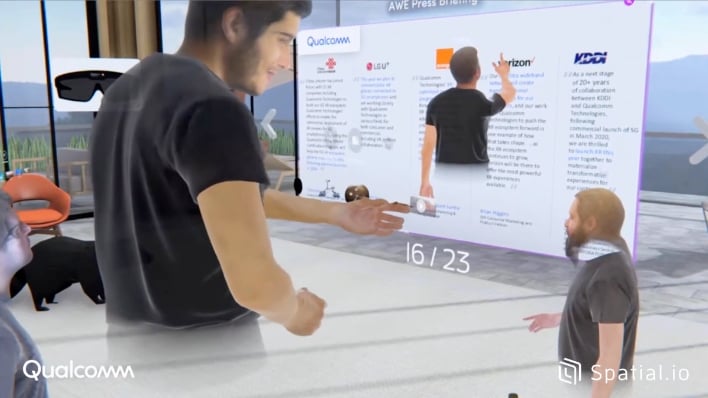Qualcomm And OEM Partners Unveil 5G Mixed Reality Glasses Solutions Amid COVID-19 Remote Collaboration Surge

Qualcomm is touting its XR Optimized Certification Program, which allows its OEM partners to develop XR viewer glasses that can give workers the situational “feel” of working alongside their coworkers, while being spread far apart. The glasses are tethered via a USB-C cable to a 5G-capable smartphone running either Qualcomm’s Snapdragon 855 or Snapdragon 865 SoC.

“Consumers’ favorite smartphone applications can become augmented reality (AR) experiences in front of their eyes or workplace meetings can be revolutionized through holographic telepresence with virtual collaboration platforms, as XR and 5G come together to transform how the world connects, communicates and consumes content,” Qualcomm writes.
As part of Qualcomm’s certification program, both the XR viewer and the smartphone have to be validated for XR experiences. On the XR viewer side, we have OEMs like Panasonic, Oppo, VLAVR, and 3Glasses joining the fray. On the smartphone front, we have ASUS, OnePlus, Oppo, and ZTE with compatible phones (more companies will join in the coming months).
As you can see in the embedded video above, multiple people were able join in during a virtual reality “briefing” hosted by Hugo Swart, Qualcomm’s VP and GM of XR. While it’s not perfect, it does help the immersion factor as being part of a group of people during a briefing. This is something that we in the media have missed during the COVID-19 mayhem – seeing hardware companies and other industry professionals in person, being able to experience product reveals in person, and having face-to-face interactions. While these virtualized experiences can’t completely supplant a true in-person meeting or briefing, it’s a key next step towards the evolution of AR and VR.

